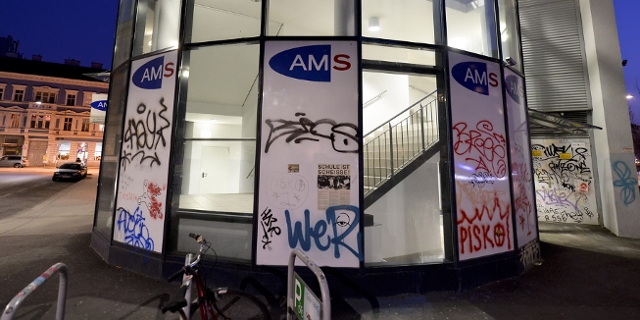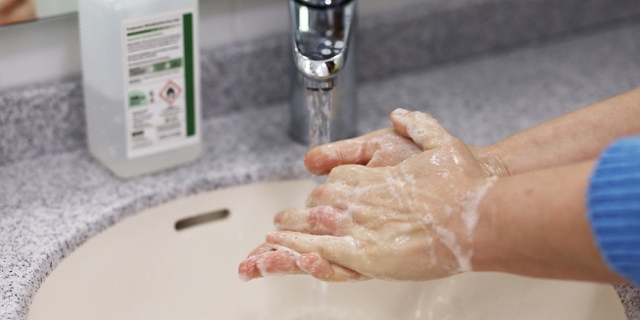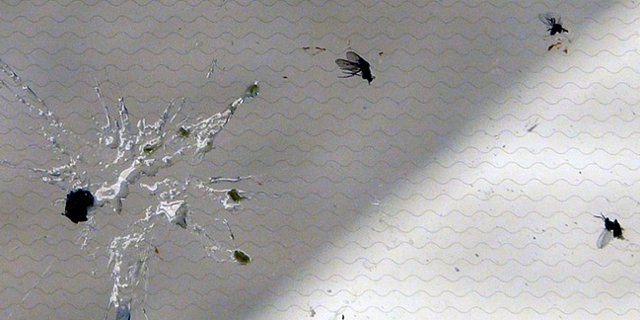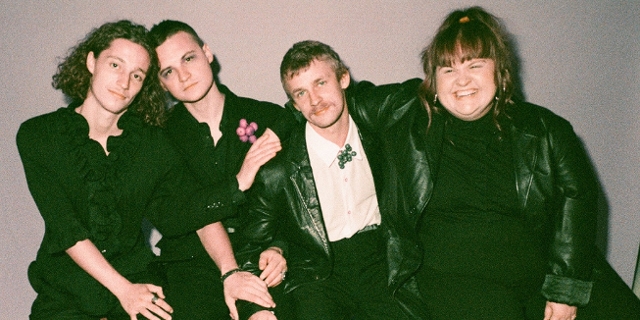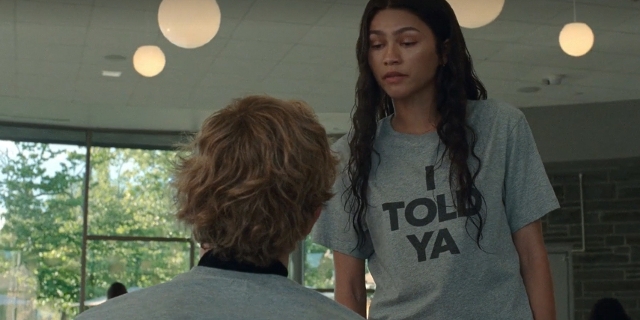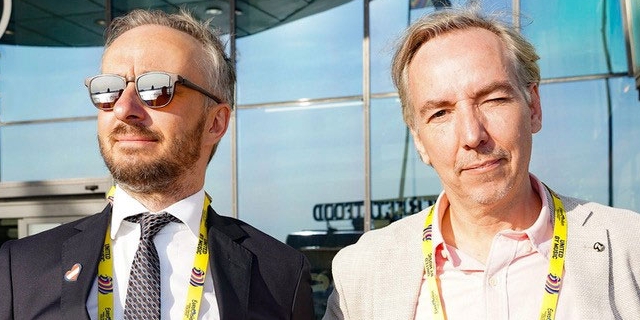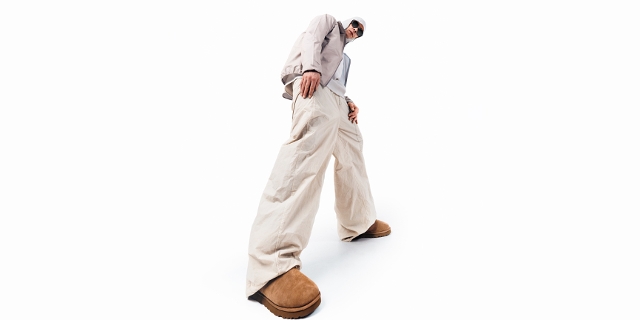The American Nightmare
Elaine May from Minneapolis paints a portrait of a US society crippled by paranoid fear; stock-piling personal arms and ammunition, cooping itself up in gated communities and triple-locking their houses.
Many have installed panic rooms or even special lock-up double-beds which are encased in bullet-proof shells. These caged-beds are marketed as capable of withstanding terror attacks. You can literally hide from the evils of world in your bed.
“And yet everything Americans do to make themselves feel safer isn’t working,” she told me at this month’s US-themed Salzburg Global Seminar, “Often it has the opposite effect.”
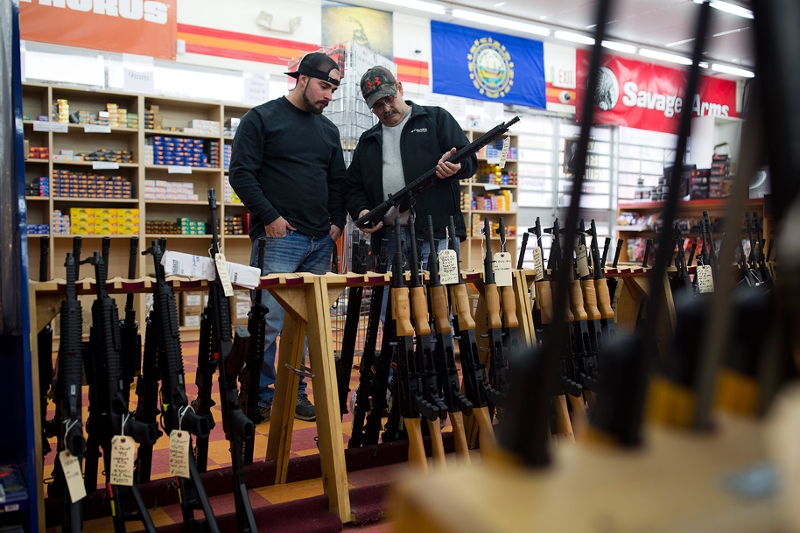
AFP
„Everything Americans do to make themselves feel safer isn’t working“ - Elaine May
Basically, May argues, Americans are afraid of the wrong threats and the obsession with self-defense is costing society dearly.
Take the fear of radical Islam; the dynamo behind President Donald Trump’s proposed travel ban on citizens of several majority Muslim countries. It’s a move enthusiastically supported by his base, despite the fact that jihadists killed 94 people inside the United States between 2005 and 2015 while during the same time period 301,797 people in the US were shot dead in firearms incidents.
Same Fear, Different Bogeymen
But the roots of this paranoid self-defense culture pre-dates the 9/11 attacks and the 2001 Patriot Act, argues May, whose forthcoming book “Fortress America; How We Embraced Fear and Abandoned Democracy” traces the origins back to the height of the Cold War.
In that era Americans were looking for reds under their beds and, terrified by campaign adverts evoking nuclear war as a consequence of voting for a rival, started digging survival bunkers in their backyards. It created a psychology of imminent danger that May argues Americans have never quite recovered from.
For many white Americans, argues May, the end of the Cold War didn’t bring reassurance but rather a new focus for their fear. The red threat became the black threat. There was an erroneous perception that a surging young black male demographic was about to launch a wave of violent crime.
Statistics never backed this perception up; instead they show a systematic bias that sees Americans of colour clogging up US jails. Yet the statistics didn’t matter because of what the campaign group Color of Change describes as “racist myth-making” on mainstream television.
For over a quarter of a century until 2013, the popular TV show Cops has portrayed mostly white police officers apprehending dangerous looking suspects who were mostly black. Color of Change describes this as “a profoundly distorted and racist picture of crime, policing and the targets of policing”.
Paving The Way To Charlottesville
These perceptions, falsified in the name of entertainment, shaped public policy. The idea that young black men were a threat to society was taken over unquestioningly by mainstream media and politicians.
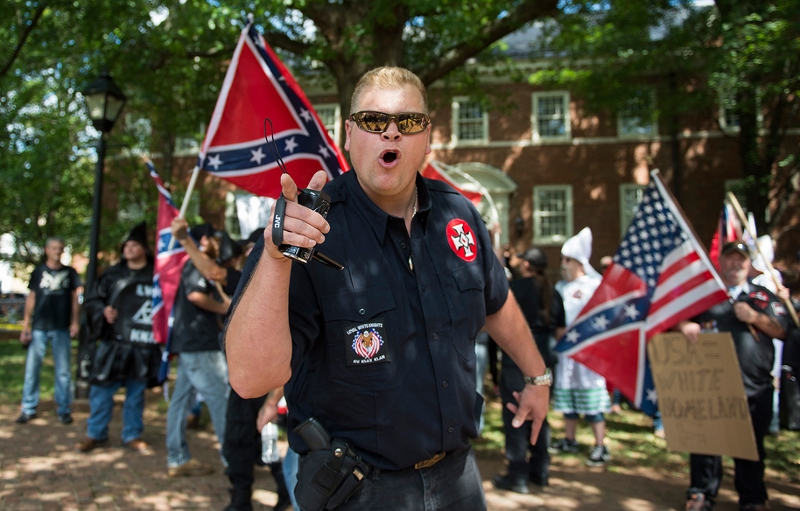
AFP
„They were so open and bold“ - Lecia Brooks
Clearly this culture of racial bias and stereotype paved the way for the armed white supremacists we recently saw in Charlottesville in Virginia.
“The frightening thing was that they were so out and proud and singing about blood and soil and all this Nazi language,” civil rights veteran Lecia Brooks of the Southern Poverty Law Center.”
They seemed to believe their racist world view was in the ascendency; a perception that was perhaps enhanced by US President Donald Trump’s failure to unequivocally condemn the white supremacists as the responsible party in the violence at Charlottesville.
Validating the Racists
Trump didn’t create the white supremacists, of course. They have been around for as long a time as the Union; but Elaine May says he has „validated“ them and, "given them permission to express their vile views.”
For Lecia Brooks hope comes in the much bigger multi-racial anti-racism protests in north-eastern cities like Boston that have sent out the message that in American mainstream culture, the numbers are still on the sides of those who believe in racial harmony and a post-race future. She advises university students on how to react to purveyors of hate-speech who visit their campuses on the platform of free speech.
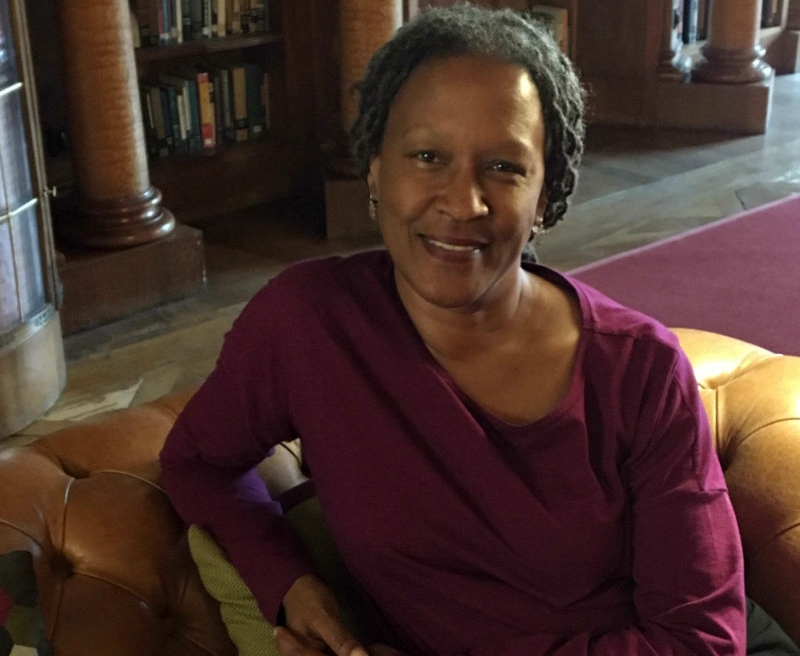
Chris Cummins
“I tell them, stay calm and show that the racists’ numbers are in fact tiny”. It is a battle of self-restraint. The white supremacists want to provoke the slanging matches and even violence that attract news cameras and portray a divided society.
The key is not to rise to the bait. “Violence is never the answer,” says Brooks.
„Fake News!“
Self-restraint is also key in the media world, says Michael Oreskes, National Public Radio’s editorial director. The Trump Administration has declared a form of war on the mainstream media, shouting (or tweeting) “Fake News!” at any critical reporting. Oreskes, who has 40 years of journalism experience under his belt, laughs wearily at the memory of such outbursts.
“Our job is and must remain the same,” he says, “to provide information in a calm and objective way.” He says you can’t shout down the shouters because you will simply alienate listeners. NPR has undergone some internal soul-searching about whether to call Trump’s erroneous statements ‚lies‘.
“It’s not that we are scared of the language or scared of the President. It’s that listeners don’t want incendiary language that sounds more like a judgement than journalism.”
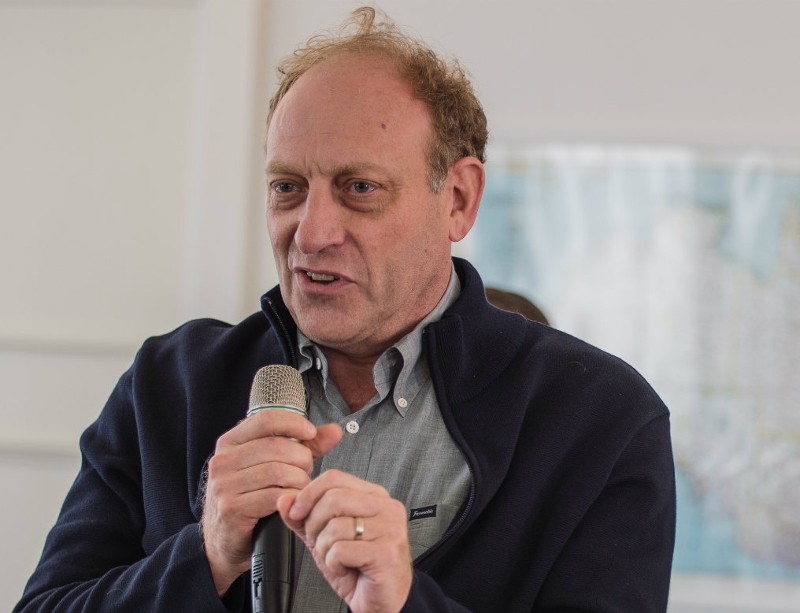
Salzburg Global Seminar/Katrin Kerschbaumer
Facts do still matter
He says that in the end facts do still matter and all talk of a post-truth age is merely nonsense. “You can shout and shout and call something blue when it is green,” he says. “but eventually people are going to realize that it really is green.”
President Trump has offered his solution to one of the greatest challenges US society faces in 2017: the Opioid Crisis than has been killing more than 30,000 Americans every year. It’s an epidemic that has hit the US heartland communities that voted for Trump and his response has been characteristically simplistic, telling people that drugs are “No good, really bad for you in every way.”
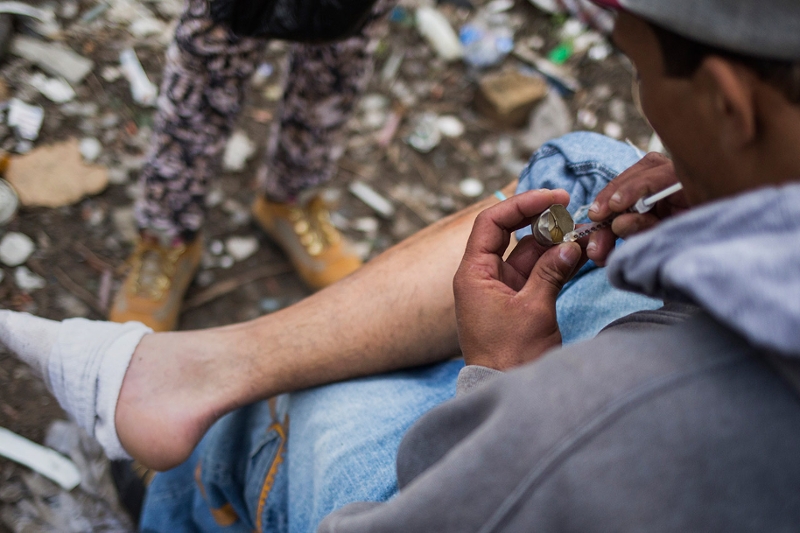
AFP
The legal response to this addiction and other drug addiction has been the establishment of drug courts: an idea conceived in the 1980s to provide an alternative to jail for those arrested for drug possession or usage.
It’s a form of coercive treatment that on the face of it seems like a good idea but Tiger, who researched the phenomenon for her 2013 book „Judging Addicts“ is disconcerted by the rights it gives judges to delve into the private life of addicts. They are questioning addicts about their eating habits, dating situation and even their sex life. She calls this part of the US’s unique “culture of control”. Besides, all too often the addicts slip up on their rehabilitation and are then sent to jail anyway.
She says it is imperative to separate the health issue of addiction from the punitive approach of the law court.
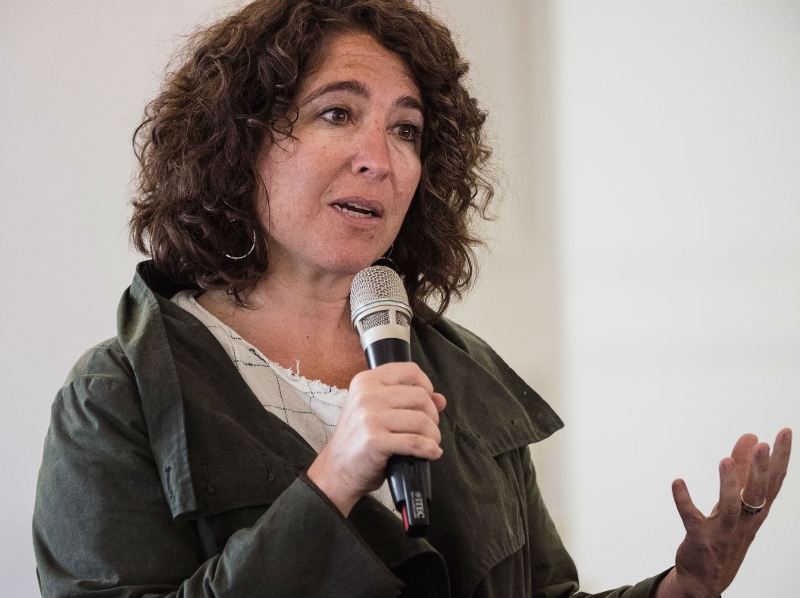
Salzburg Global Seminar/Katrin Kerschbaumer
Rebecca Tiger at the SGS
Don’t Blame The Addicts
The Guardian’s Chris McGreal slams Trump for blaming the addicts in the first place. If anyone deserves to be jailed for the opioid crisis, they are perhaps sitting in a Big Pharma boardroom. This was, McGreal argues, a foreseeable epidemic driven by the rapacious greed of pharmaceutical companies who lobbied the authorities to relax restrictions on highly addictive opioid pain-killers and disingenuously persuaded the medical practitioners that patients were unlikely to become addicted into what amounted to heroin in pill form.
Thus argues, McGreal, “too often that addiction began by following the advice of a doctor who, in turn, was following the drug manufacturers instructions.” His damning conclusion: “Unlike most other countries, the US health system is run as an industry not a service… Too often, their bottom line is profits not health.”
A Grim State of the Union
Addiction, neurosis, racism and lies – that’s a grim State of the Union. The American Dream has seduced us for generations with its intoxicating promise of a better life for those just prepared to work for it. The global clamber for Green Cards is evidence that this dream still burns brightly in millions of hearts. No wonder. I have focused on the negatives, but we still look to the USA for our technical innovation, economic path-finding and, however reluctantly, our global policing.
But there are cracks in that dream. The rhetoric of Barack Obama, with his „Yes We Can!“ message of unity, managed to paper over them for eight years, but now with a vulgar and divisive President tweeting his way into chaos, the chimera is in danger of evaporating.
Publiziert am 30.09.2017









